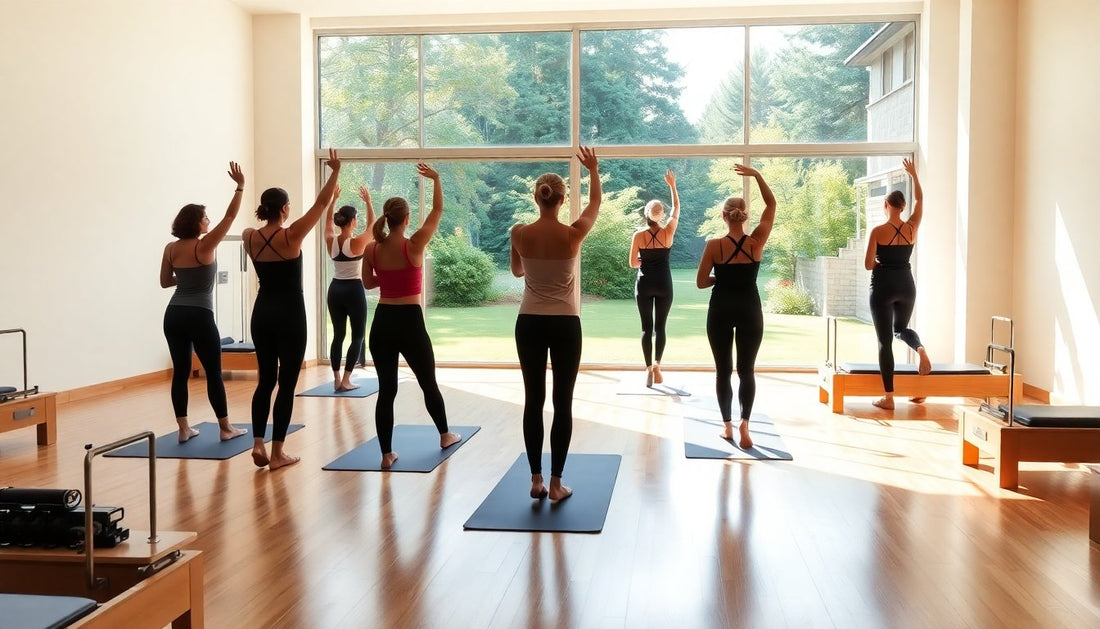In today's fast-paced world, where we spend countless hours hunched over screens and sedentary in our daily routines, maintaining good posture and flexibility has become a significant challenge. However, there is a solution that can help us regain control over our physical well-being - Pilates. This transformative practice not only strengthens our core but also helps to improve our posture and increase our overall flexibility.
The Importance of Posture
Proper posture is essential for our overall health and well-being. When we maintain good posture, our muscles and joints are aligned, reducing the strain on our body and allowing us to move with greater ease. Conversely, poor posture can lead to a host of issues, including back pain, neck discomfort, and even headaches.
Pilates is particularly effective in addressing posture-related problems. The exercises focus on strengthening the core muscles, which act as the foundation for our body's alignment. By engaging these muscles, we can improve our posture and reduce the strain on our spine and other joints.
Enhancing Flexibility
Flexibility is another crucial aspect of our physical well-being. When we are flexible, we can move with greater ease, reducing the risk of injury and improving our overall quality of life. Pilates is renowned for its ability to enhance flexibility, as the exercises focus on stretching and lengthening the muscles.
One of the key principles of Pilates is the concept of "control." Each movement is performed with precision and control, allowing the muscles to work through their full range of motion. This not only strengthens the muscles but also helps to increase their flexibility, leading to greater mobility and improved overall function.
Pilates Exercises for Posture and Flexibility
Pilates offers a wide range of exercises that can help improve posture and flexibility. Here are a few examples:
The Hundred
This classic Pilates exercise is a great way to engage the core muscles and improve posture. By lying on your back, lifting your head, shoulders, and legs, and pumping your arms, you'll work your abdominal muscles and help to align your spine.
The Roll-Up
The roll-up is a challenging yet effective exercise that targets the abdominal muscles and improves spinal flexibility. Starting in a seated position, you'll slowly roll down to the floor and then roll back up, engaging your core throughout the movement.
The Spine Stretch Forward
This exercise focuses on stretching the back and improving overall spinal flexibility. From a seated position, you'll reach your arms forward and gently fold your body in half, feeling the stretch along your spine.
The Leg Circle
The leg circle is a great way to improve hip and leg flexibility. Lying on your back, you'll lift one leg and draw large circles with your foot, working through the full range of motion of the hip joint.
Incorporating Pilates into Your Routine
Incorporating Pilates into your daily routine can have a profound impact on your posture and flexibility. Whether you choose to attend a Pilates class or practice at home, the benefits of this transformative practice will be felt throughout your body.
Remember, consistency is key when it comes to Pilates. By making it a regular part of your lifestyle, you'll not only improve your posture and flexibility but also enhance your overall physical and mental well-being.
So, why not give Pilates a try today? Your body will thank you for it.
Conclusion
Pilates is a powerful tool for improving posture and flexibility. By strengthening the core, enhancing muscle control, and promoting full-body mobility, Pilates can help us regain control over our physical well-being and move with greater ease throughout our daily lives.
Whether you're looking to alleviate back pain, reduce the risk of injury, or simply feel more comfortable in your own skin, Pilates is a practice worth exploring. So, why not give it a try and experience the transformative benefits for yourself?

